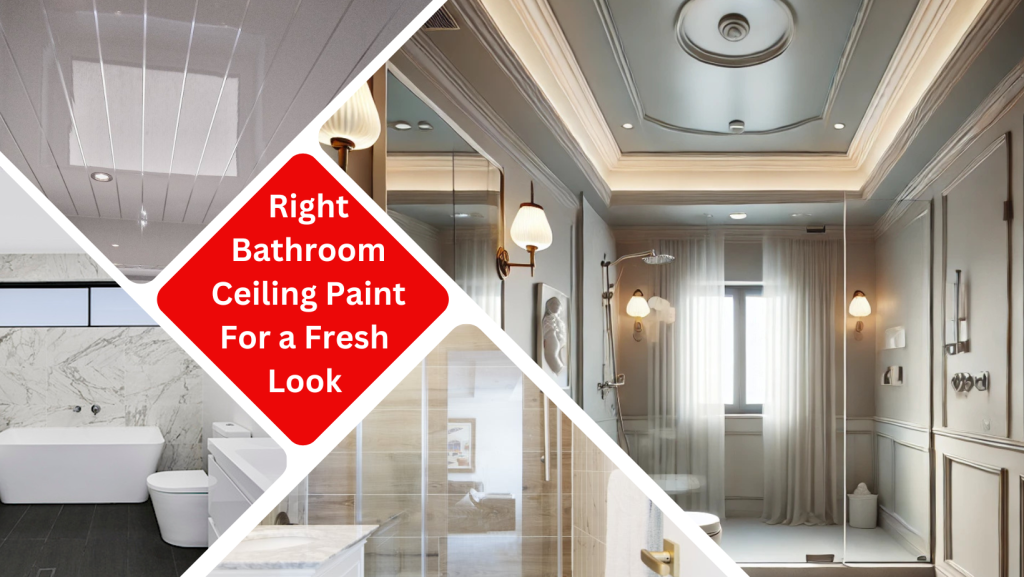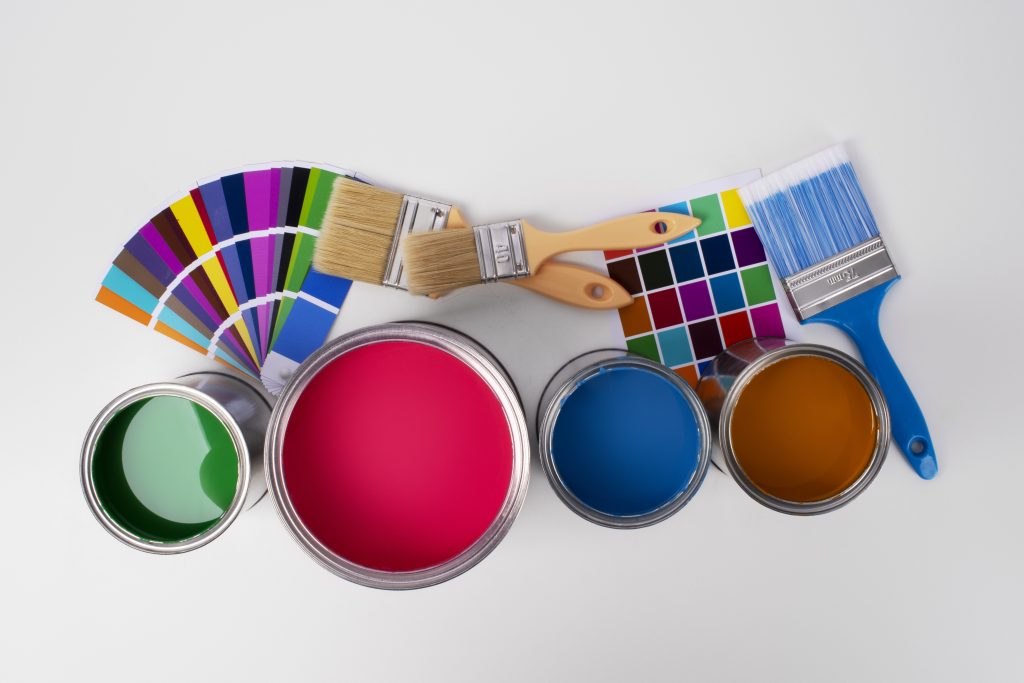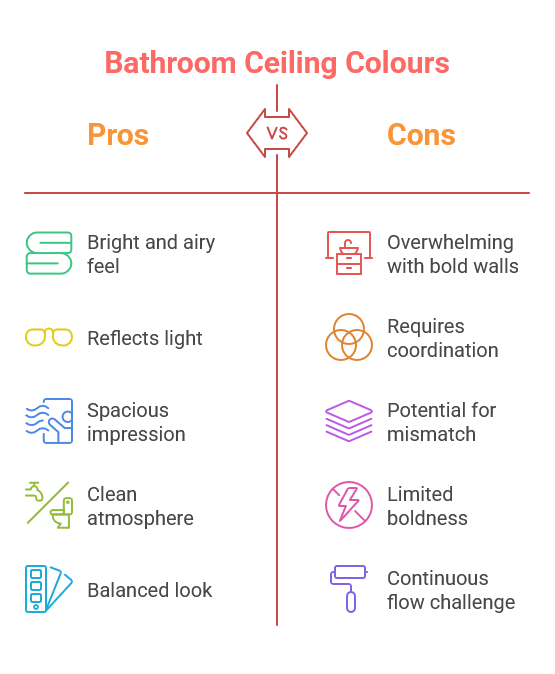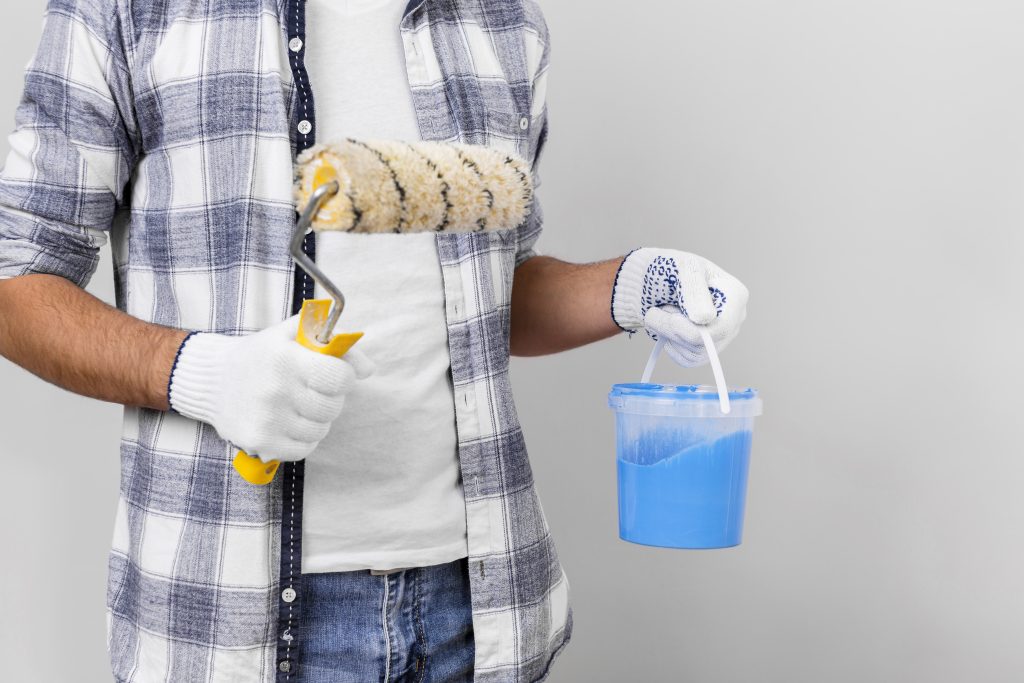
You hardly pay attention to your bathroom ceiling because nobody even notices it, right? Between the lighting, showers and the walls around, the detail on top is easy to overlook unless you’re looking up.
Your bathroom ceiling paint is important, though, in creating your dream bathroom because it impacts your water closet’s overall aesthetic and functionality.
If your paint up there is cracking and bubbling, there must be some underlying issues, such as excess moisture, telling you it’s time for a fresh coat of paint!
The right paint can elevate the look and durability in moisture-prone areas like your bathroom. It can protect the ceiling, preserving the integrity of a functional space.
Understanding Bathroom Ceiling Requirements
Giving your bathroom ceiling a fresh look is not always about beauty and visual appeal. More than aesthetics, it requires durable materials to maintain its functionality.
Moisture Resistance
The bathroom is the most humid area in your house, prone to moisture that attracts fungus and bacteria. That’s why it requires a special type of paint designed to combat steam and humidity.
There are moisture-resistant paints with antimicrobial additives created to resist the water vapour in the air and prevent the growth of moulds. These types of coatings provide enduring protection and keep the attractiveness of your bathroom intact.
Durability
Since your bathroom is constantly subjected to moisture and chemicals, use paints that can withstand frequent cleaning and deter potential mould growth.
There are washable, mould-resistant paints that don’t lose their colours, despite the humid environment. By using these high-quality products, you can maintain the beauty and cleanliness of your bathroom with a long-lasting paint job.
Types of Paint Suitable for Bathroom Ceilings

Here’s the thing: the paint that you use on your bedroom walls wouldn’t really work on the fifth wall of your bathroom. It’s the moisture factor.
Here, take a look at the types of coatings that thrive in damp places, repelling water to prevent mould buildup:
Water-Based Latex or Acrylic Paints
Latex and acrylic paints are made of water, and therefore can tolerate water.
Water-based paints are easy to clean, quick to dry and resistant to mildew. They can absorb moisture without affecting their adhesion to the surface.
For your bathroom ceiling paint, we recommend satin or semi-gloss finishes. They’re highly resistant to mould and mildew and are easier to clean.
Also, coatings with a slight sheen reflect light, thus making your powder room look brighter and bigger.
Mould and Mildew Resistant Paints
With your bathroom being humid, it’s critical that you use paint specifically designed to prohibit mould growth that causes serious damage.
Mould and mildew-resistant paints won’t just stop water absorption but also resist dust and smog. Without mould spores flying around, air quality is improved, encouraging a healthier bathroom environment.
Flat or Matte Finishes
Another suitable bathroom ceiling paint is low-gloss finishes that reflect light. They’re ideal to disguise imperfections, creating an even, smooth surface for your bathroom’s cap.
However, flat or matte finishes take in water and are hard to clean. Although they would look elegant as your bathroom ceiling paint, they don’t do well in muggy settings and may require greater care and maintenance.
Eggshell and Semi-Gloss Finishes
Eggshell and semi-gloss finishes don’t just look good, but they’re also practical and sturdy. They’re incredibly great for bumpy and damaged bathroom ceilings.
Notably, the semi-gloss finishes can repel water and moisture, making it a smart choice for bathroom ceilings painting.
Nevertheless, these finishes provide moisture resistance and ease of cleaning. Plus, they reflect light, reducing heat absorption and making your bathroom appear brighter.
Choosing the Right Colour

You can give your bathroom a nice, fresh appearance with paint in a few hours. The only thing hard about renovating your water closet is deciding the colour palettes.
Well, there’s really no science to choosing the perfect bathroom ceiling paint. There’s endless potential,though, and we’re going to help you uncover these possibilities for a bathroom space that you’ll surely love.
Light Colours for Brightness
Lighter shades like white, mint green, light blues and pale grey will give your bathroom a spa-like, airy feel to it.
Since these soft tones can reflect light, they can give a small bathroom a spacious and vibrant impression. They can also create a clean and optimistic atmosphere that you can unwind in after a long day.
Coordinating with Wall Colours
Pick a bathroom ceiling paint that harmonises with the wall colours of your bathroom. This way, you can achieve a more balanced and cohesive look.
If your walls have bolder hues, try ceiling colours that are soft and lighter. This is a coordination tip so you don’t overwhelm the spaces and your senses.
However, if you want a continuous flow of colours, align the shades of your walls with your ceiling to make them more connected.
Preparing the Ceiling Before Painting
Preparation is key, especially when it comes to painting. Prep work will save you money, time and effort.
Surface Preparation
Thoroughly polish your ceiling; remove dust, grease and existing mould. These substances are barriers, stopping your paint from strongly adhering to the surface. Plus, moulds leave dark spots that result in unsightly discolouration if not properly cleaned.
You can use a sponge or a cloth and apply a mild cleaning solution to clean the ceiling, properly preparing the foundation of the paint.
Priming
For bathroom ceiling painting, priming is a necessary step to ensure the paint sticks well and produces a fantastic finish. This is a very helpful process, especially when you’re dealing with blemishes and existing paints.
Primers seal the surface, preventing the moisture from seeping in and causing damage.
But since your bathroom is a high-moisture area, you need a waterproofing primer to improve durability and ensure a long-lasting paint job.
Application Techniques
Tools Needed
The right tools make the difference between a mundane finish and an attractive paint job.
Without further ado, here are the tools that you need to gather up:
• Medium cover rollers with a long nap to handle large surfaces. If you have a textured bathroom ceiling, a roller with a thick nap is much preferred.
• Extension poles attached to your roller to reach higher ceilings
• Angular style brushes to precisely work on edges, narrow corners and hard-to-reach spaces.
Painting Process
To effectively apply paint on your bathroom ceiling, follow these steps:
• Prepare the bathroom by removing any fixtures, covering the floor and using painter’s tape to mask off the spaces that you won’t be painting.
• Prime the surface of your ceiling and allow drying time.
• Start painting on the edges of your ceiling with your angular brush to achieve a cleaner finish and not miss a spot right before you roll the paint.
• Using the roller, paint on the edges in small sections. As you fill out the surface, do it without lifting the roller, steadily rolling the paint across the ceiling.
• When the first coat of paint has properly cured, you can apply the second coat of paint.
Maintenance Tips Post-Painting

Proactive attention will ensure your bathroom ceiling paint will last longer, avoiding costly repairs and replacements.
Keep in mind these maintenance tips after you’ve painted your ceilings.
Cleaning Painted Ceilings
Approach this process with gentler cleaning methods: dust the surface with a feather duster or with a dry and soft cloth.
If you want a detailed cleaning to handle difficult stains, you can apply a mild cleaner to prevent scratches or damage. However, test your solution first on a small spot to make sure it doesn’t have unwanted reactions.
Regular Inspections
Check your painted ceiling for signs of peeling or moulding, as these issues occur over time due to moisture exposures.
If you see your paint cracking or blistering, there might be water under the paint.
Regular inspection will allow you to notice and address these problems before they become bigger.
Conclusion
Your bathroom ceiling paint is not just for aesthetics; it’s a pragmatic decision to ensure the functionality and longevity of one of the most important spaces in your home.
Regular paints won’t work in a room prone to moisture; understanding that will allow you to pick the right paint that promises a clean, lasting and stylish bathroom.
So, don’t rush your paint selection process; invest time. Contact A One Korean Painting if you need expert knowledge in choosing top-notch products for sustainable results.

